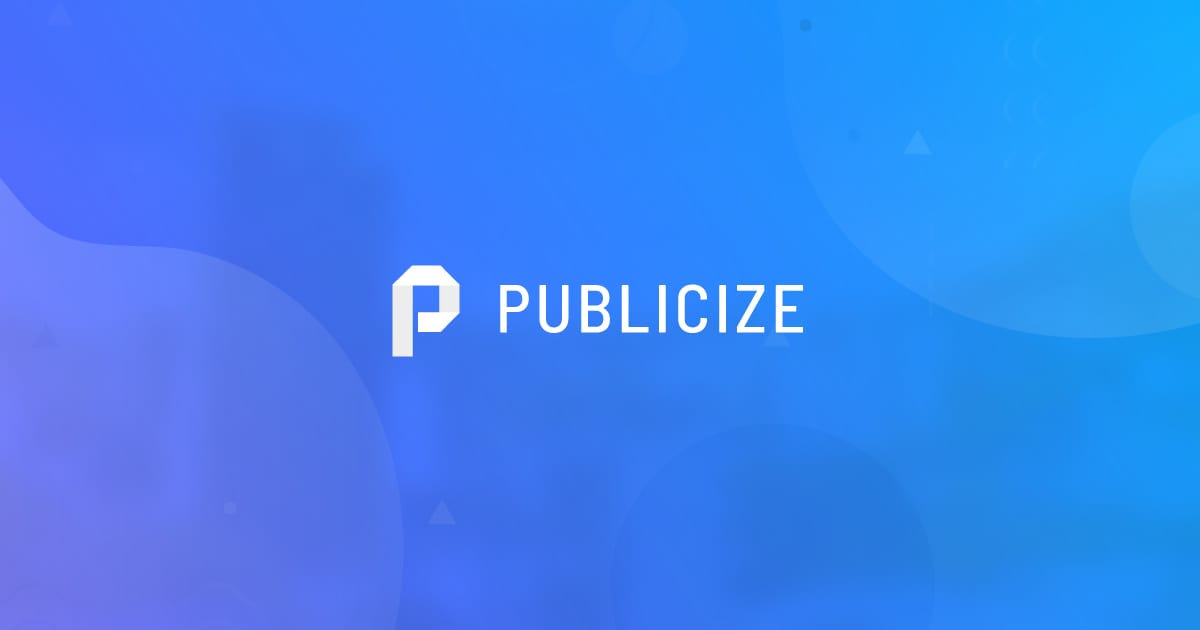This article initially appeared on the 500 Startups blog.
Editor’s Note: Today’s post comes from Conrad Egusa, CEO of Publicize and a 500 Startups Mentor specializing in PR and media. PR can be INCREDIBLY important for startups — not only as a one-time bump in growth but also for long-term amplification of your good efforts.
Good (positive) PR hits 2 major influence factors, social proof and authority, and even bad (negative) PR will drive a bump in traffic and attention. How you capture and convert is up to you, but the first step? GET INTERNET FAMOUS.
Last note: have you ever tried to do PR for yourself or your company? It IS kind of scary, those journalists DO bite. As my friend Eric Eldon (former editor in chief at Techcrunch) used to say, “Never pick a fight with those who buy ink by the barrel.”
Today’s post breaks it down so you can avoid those reputation-tarnishing mistakes.
So you have a startup and it’s high time everyone else knew about it, right?
Maybe you have a new product, or a re-launch or some other event that is going to put your company on the map. But what is the goal of PR? And how can you channel your efforts into reaching that goal? Let’s see if we can’t answer these all important questions.
The goal of PR
Most people know what PR – aka, public relations – is.
Jokes aside, communicating you and your company’s message is an important part of expanding any business or startup and, nowadays, many businesses know that they need at least some PR function.
But, ultimately, the goal of PR is to own a space, to colonise an industry and make you or your company the go-to for comment and direction.
Of course, the immediate goal of PR is to generate press coverage, but by doing this effectively, you can ensure your business is mentioned in future articles even when you haven’t made an announcement; that is what owning a space is all about (i.e: how Dave Mcclure owns mind-share — and search results — when people think of accelerators and investments).
It sounds hard but luckily, there are a number of ways to a this.
Two of the most effectives are:
1. Use guest articles – written by either a business leader or ghost written on their behalf – to build that person as an authority figure in their industry
2. Use press releases to inform journalists and news sites of new changes and events that are happening within your company. This article focuses on how to best craft, pitch and use a press release to gain meaningful coverage.
How to generate press coverage with press releases
So, as discussed, one of the best ways to generate press attention is by using a press release, which informs journalists and editors of the announcement you or your company is making.
To the uninitiated, or those who aren’t comfortable writing, this may seem like a daunting task. However, this doesn’t have to be the case.
Creating a press release and then pitching it to journalists can be broken down into just a few simple steps. Remember, if you aren’t confident in your literary skills, have a grammar-obsessed friend – we all know at least one – read over it, too.
In the next section, I’ll go over the 7 steps to crafting a killer press release that won’t get ignored.
1. WHAT IS YOUR STORY?
Contrary to popular belief, the media is not a minefield and (most) journalists are not scary.
Many are just humble writers looking for the most interesting new story they can find. The key word in all of this is ‘new’. No self-respecting media outlet is going to touch yesterday’s story, unless you can offer them something, well, new.
To make sure your news is in fact newsworthy, you need to work out what announcement you are making. Company and product launches are often the most eye-catching, in addition to take-overs (the more aggressive/expensive the better) and funding announcements. However this list is not a ranking. Anything has the potential to be newsworthy if you get the timing right. Below is an example of TechCrunch covering a Version 1.0 launch.
CRAFTING YOUR PRESS RELEASE
The press release and the email pitch are the most important elements of generating media attention. Communicating an announcement poorly is the most efficient way of making sure no one hears about it, ever.
Press releases should be about a page long and they must not leave factual holes.
Good releases should follow a format similar to the COPYABLE TEMPLATE below:
The title: A headline for your release, essentially in the format of: “Something/someone does/experiences/announces something new”.
First Paragraph: Discuss the larger mission of the new announcement, i.e. what it does and what it is for. Include a date and location at the very beginning.
Second paragraph: Delve into the specifics of your product / announcement.
Third paragraph: A quote from your CEO or a business co-founder explaining the announcement. This means that journalists won’t have to waste their time – or your company’s time – finding quotes for the article.
Fourth paragraph: Bring in trends to explain why this announcement is relevant to the larger industry / community that your business is a part of. Ideally this will include at least one data point (ex: how large the industry is).
Fifth paragraph: Wrap up with a final quote from your CEO or founder.
Sixth paragraph: Briefly sum up the history of your company and the background of its leader(s). Also include a contact for journalists to use if they aren’t happy sticking with the quotes in the press release, or if they want more in-depth information.
If you’d like to see, we have a few example press releases are here.
PITCH IT WELL
Pitching the press release will happen by email. The press release does not sell a journalist on covering the story, the email does. The press release then provides information to better help a reporter cover the story.
To increase chances of having your story ‘picked up’ – that is, published – make your email a bit more personal (more on email marketing ninja tricks here).
Research the journalist in question’s name and make sure you don’t use the wrong one. Remember, you only have one shot at a first impression and this isn’t amateur hour. You have to get it right first time. An example email is below (the subsequent media coverage is here).
DEFINE YOUR “COVERAGE STRATEGY”
So you have your release and you have your email pitch; now what? Before sending your press release out into the world, it’s worth considering whether or not you want blanket coverage, or whether you want to offer your announcement as an exclusive.
If you opt for blanket coverage, i.e., sending your press release to as many journalists as possible, entrepreneurs coordinate that coverage by asking journalists to respect an embargo. This means that the journalist or publication will agree not to publish a story about your announcement before a set time or date.
Depending on where you’re pitching, this can be tricky. For example, while journalists in the UK seem to take an embargo agreement as read – you can just put EMBARGO above your release in most cases – this is not always the case in the US. Remember, if in doubt, ask the journalist to agree to an embargo first. Still, this is no guarantee and is a reason why offering the story as an exclusive may be a better option.
EXCLUSIVES
To a reporter trying to publish stories ahead of competitors, the word ‘exclusive’ is music to their ears. Essentially it means that a specific publication will have the right to publish your announcement first, before you reach out to other outlets.
This is a particularly useful tactic in media zones where the embargo rule may or may not be followed. It prevents the occurrence of a journalist ‘breaking ranks’ and publishing a story before the embargo is lifted.
There are several other advantages to offering your release as an exclusive:
1. Larger publications – e.g. TechCrunch and VentureBeat – are more likely to take your press release seriously (and use it) if you offer it as an exclusive.
2. As it turns out, French philosopher Roland Barthes was totally right about thatDeath of the Author thing: journalists take stories from each other all the time, so offering an exclusive won’t stop other publications picking the story up.
3. Coverage on a bigger niche publication (in this case for the tech industry) opens doors to newspapers and more mainstream media coverage. As the saying goes: Aim high, shoot low.
If you are looking for journalists to contact, we have a list of reporter emails here, and we are happy to provide access to the media journalist database our team uses to friends of 500 Startups (please write [email protected] for access).
AMPLIFY THAT COVERAGE
Once the article comes online – the journalist writing the piece should give you a heads up – it’s action stations.
If you have social media accounts, share the piece. Send the story to investors, customers, your employees and even your parents, asking that everyone shares it via their own social media accounts.
After this step, email other publications with the press release and a link to the story. This can be a good way of getting them to notice your announcement but remember to be careful not to rub it in their faces. After all, it’s highly likely that you gave your announcement as an exclusive to a rival publication first. If this is the case it’s worth offering your CEO or founder’s time to other large media sources.
EAT, SLEEP, MEDIA: REPEAT
The work of building media coverage is never over. (sorry…)
If your announcement has been a success, no doubt your startup or business will have been featured on a number of big and small media outlets.
Pat yourself on the back, dust yourself off and then start working out what your next announcement will be. Press releases owe themselves well to establishing a media cycle, which ideally will be repeated every 8-12 weeks, or whenever you and your business have an announcement to make.










